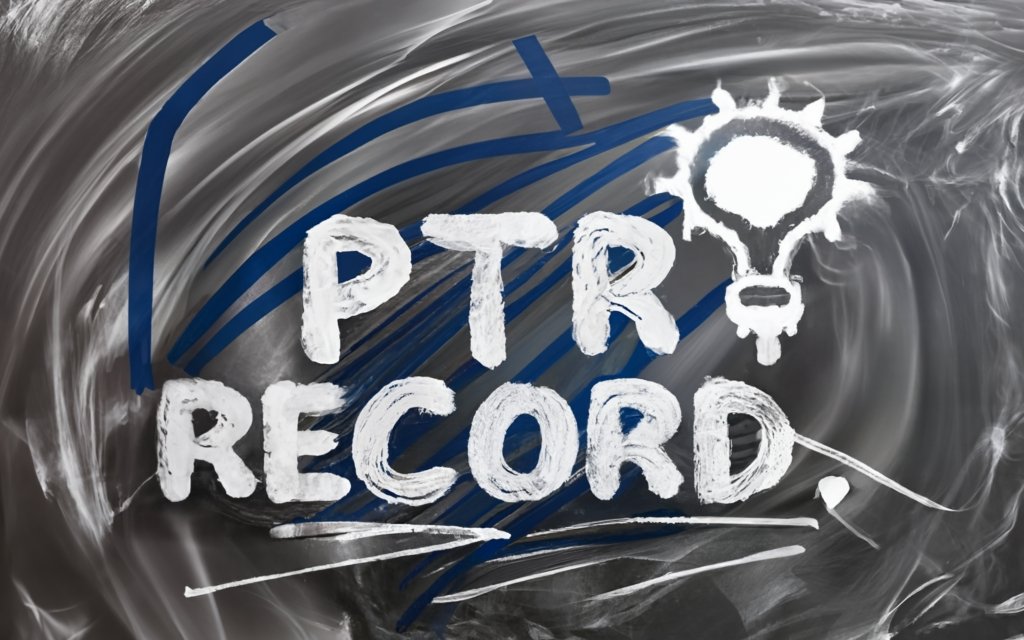
Demystifying PTR Records: A Guide to Updating Server Reverse DNS
Table of Contents
Introduction:
Understanding and managing PTR (Pointer) records is essential for maintaining the integrity and security of your server’s DNS infrastructure. In this guide, we’ll delve into the purpose of PTR records, their significance in network administration, and most importantly, how to update them for your server. Whether you’re troubleshooting connectivity issues, verifying server identities for email authentication, or bolstering security measures, knowing how to effectively manage PTR records is key.
What is PTR records?
A PTR (Pointer) record is a type of DNS (Domain Name System) record used for reverse DNS lookups. While most DNS records map domain names to IP addresses (forward lookups), PTR records map IP addresses to domain names (reverse lookups).
PTR records are commonly used to verify the identity of a server or service. When an email server receives an incoming email, it may perform a reverse DNS lookup on the IP address of the sender to verify that the domain name associated with that IP address matches the domain name declared in the email’s “From” address. Similarly, PTR records can be useful in network troubleshooting and security measures.
The purpose of PTR record
The primary purpose of a PTR (Pointer) record is to enable reverse DNS lookups. While most DNS records map domain names to IP addresses (forward lookups), PTR records serve the opposite function by mapping IP addresses to domain names. This is particularly useful for verification purposes.

Here are some key purposes of PTR records:
- Verification: PTR records are commonly used to verify the identity of a server or service. For example, when an email server receives an incoming email, it may perform a reverse DNS lookup on the IP address of the sender to verify that the domain name associated with that IP address matches the domain name declared in the email’s “From” address. This helps in spam filtering and fraud prevention.
- Network Troubleshooting: PTR records are valuable tools for network administrators and engineers when troubleshooting network issues. By performing reverse DNS lookups, they can identify the domain names associated with specific IP addresses, which can help in diagnosing connectivity problems, identifying misconfigurations, or tracing the source of malicious activity.
- Security Measures: PTR records can also be used as part of security measures. For example, some security systems or firewalls may use PTR records to validate incoming connections. If the PTR record doesn’t match the expected domain name, it may trigger additional security checks or block the connection altogether.
Overall, PTR records play a crucial role in maintaining the integrity of the DNS infrastructure and ensuring the security and reliability of network communications.
How update PTR records for the server?
Updating a PTR (Pointer) record for a server typically involves making changes through the DNS management interface provided by the entity that manages the reverse DNS zone for the IP address range in which your server resides. This is usually your Internet Service Provider (ISP) or the organization responsible for allocating IP addresses to you.

Here’s a general guide on how to update a PTR record for your server:
- Identify the Responsible Entity: Determine which organization is responsible for managing the reverse DNS zone for the IP address range that your server is using. This is often your ISP or the entity that allocated the IP addresses to you.
- Access DNS Management Interface: Once you’ve identified the responsible entity, log in to their DNS management interface. This interface may be a web-based control panel provided by your ISP or a specialized DNS management tool.
- Locate the Reverse DNS Zone: Find the section or option within the DNS management interface that allows you to manage reverse DNS zones. This is where PTR records are typically managed.
- Locate the Existing PTR Record: If there’s already an existing PTR record for your server’s IP address and you need to update it, locate the record within the reverse DNS zone.
- Update or Add PTR Record: Depending on whether you’re updating an existing PTR record or creating a new one, follow the appropriate steps:
- Updating an Existing PTR Record: If you’re updating an existing PTR record, locate the option to edit the record and make the necessary changes (e.g., updating the domain name associated with the IP address).
- Adding a New PTR Record: If there isn’t an existing PTR record for your server’s IP address, find the option to add a new PTR record. Enter the IP address of your server and the corresponding domain name.
- Save Changes: After updating or adding the PTR record, save your changes within the DNS management interface.
- Propagation: Keep in mind that DNS changes may take some time to propagate throughout the Internet. It could take several hours or even up to a day for the updated PTR record to become effective across all DNS servers.
- Verification: Once sufficient time has passed for the changes to propagate, you can verify the updated PTR record using tools like
nslookupor online DNS lookup tools to perform a reverse DNS lookup on your server’s IP address.
If you’re unsure about the specific steps or if you encounter any issues, don’t hesitate to reach out to your ISP or the organization responsible for managing your IP addresses for assistance with updating the PTR record for your server.
Conclusion:
In the ever-evolving landscape of network administration, the importance of PTR records cannot be overstated. From verifying server identities to troubleshooting connectivity issues, these records are indispensable tools in the arsenal of every server administrator. By following the guidelines outlined in this guide, you’ve taken a significant step towards mastering the intricacies of PTR record management. Remember, effective DNS management is not just about configuring forward lookups; it’s about understanding and leveraging the full spectrum of DNS records to optimize the performance and security of your server infrastructure.